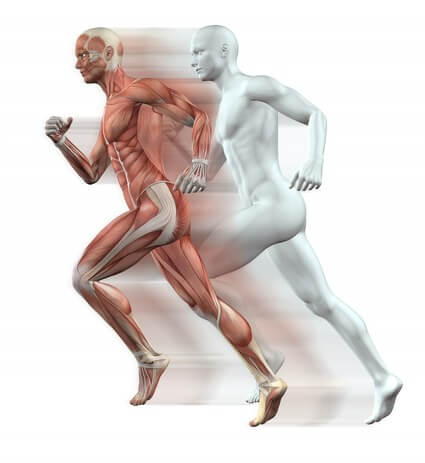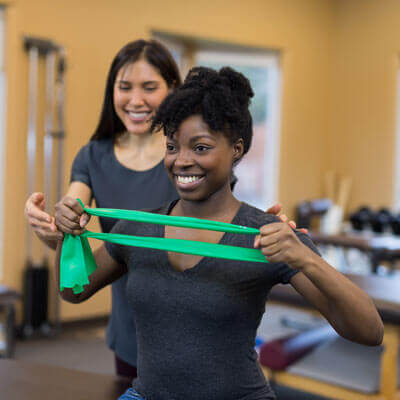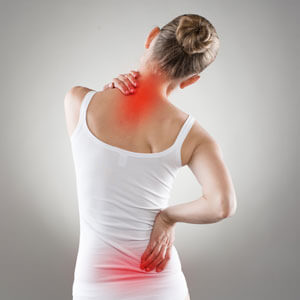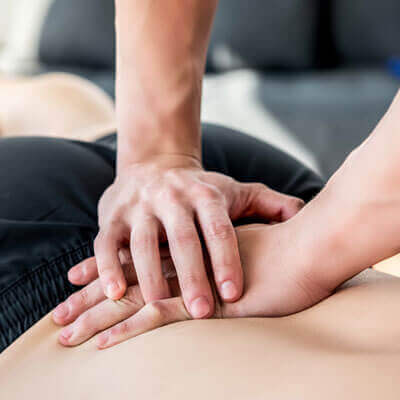 The human body is a highly adaptive system, constantly adjusting to the stresses and demands placed upon it. In kinesiology, principles such as Wolff’s Law (which applies to bone adaptation) and Davis’s Law (which relates to soft tissue changes) describe how our body remodels in response to mechanical forces. According to Davis’s Law, ligaments, tendons, and fascia adapt along the lines of tension they experience.
The human body is a highly adaptive system, constantly adjusting to the stresses and demands placed upon it. In kinesiology, principles such as Wolff’s Law (which applies to bone adaptation) and Davis’s Law (which relates to soft tissue changes) describe how our body remodels in response to mechanical forces. According to Davis’s Law, ligaments, tendons, and fascia adapt along the lines of tension they experience.
In most cases, these adaptations are beneficial—regular exercise leads to stronger muscles, improved tendon resilience, and enhanced joint stability.
However, when stress is applied incorrectly or imbalances exist, adaptation can lead to dysfunction, pain, and increased injury risk. Understanding how the body responds to mechanical stress is key to optimising movement, preventing injuries, and ensuring long-term musculoskeletal health.
Adaptation and Tissue Strength: The Balance Between Progress and Strain
 When engaging in physical activity—whether through sports, weightlifting, or daily movement—our muscles and connective tissues adapt to handle increased demand. This follows the SAID principle (Specific Adaptations to Imposed Demands), which states that the body adapts specifically to the type of stress it experiences.
When engaging in physical activity—whether through sports, weightlifting, or daily movement—our muscles and connective tissues adapt to handle increased demand. This follows the SAID principle (Specific Adaptations to Imposed Demands), which states that the body adapts specifically to the type of stress it experiences.
For instance, tendons stiffen and strengthen over time to support increased load-bearing, while muscles hypertrophy (grow larger) or improve in efficiency.
However, problems arise when adaptation occurs unevenly. Research shows that muscles often strengthen more quickly than tendons, which take longer to develop stiffness and load-bearing capacity. If training intensity increases too rapidly, the stronger muscles may exert excessive force on relatively weaker tendons, increasing the risk of micro-tears and irritation.
Key Considerations for Balanced Adaptation
Tendon adaptation requires progressive loading—sudden increases in intensity (such as lifting heavier weights without tendon conditioning) can lead to strain. Eccentric and isometric exercises help improve tendon resilience, allowing them to match the strength of surrounding muscles. Adequate recovery and varied movement patterns prevent overuse injuries linked to repetitive stress.
In essence, strength must develop in harmony across the muscle-tendon unit to avoid excessive strain on any single structure.
The Impact of Poor Technique and Incomplete Training
Adaptation follows specific movement patterns—which means that if an individual consistently performs exercises with poor technique, the body will reinforce faulty movement habits. Over time, this can lead to maladaptive changes, including tightness, instability, and injury susceptibility.
 For example:
For example:
- Lifting heavy objects with poor posture (e.g., bending at the back instead of hinging at the hips and bending knees) places excessive strain on the lower back, leading to stiffness and pain.
- Repetitive poor form in squats (e.g., knees caving inwards) overloads certain ligaments and weakens key stabilising muscles.
- A limited range of motion in training prevents joints and tendons from developing full functional resilience.
When movement faults persist, the body reinforces incorrect loading patterns, often resulting in:
- Overworked and tight muscles, causing stiffness and limited mobility.
- Weakened or underused muscles, reducing joint stability.
- Increased risk of tendon degeneration, as tissues fail to adapt optimally to repetitive stress.
Without correction, maladaptive adaptations can accumulate, leading to chronic pain and reduced mobility.
Compensatory Adaptations: When the Body Tries to Help but Causes Harm
One of the body’s natural survival mechanisms is compensation—where, if one muscle or joint is struggling, another takes on additional workload.
 For example:
For example:
- If an individual has weak glutes, their lower back may take over to provide stability, leading to chronic back tightness.
- If knee pain causes a person to favour one leg, the opposite leg and hip absorb greater stress, increasing the risk of overuse injuries.
- If an individual has limited ankle mobility, they may unconsciously overload their knees, increasing the likelihood of knee tendon issues.
While compensation allows the body to function in the short term, long-term compensatory adaptations can lead to strain, joint degeneration, and muscle imbalances.
Key Takeaway: Not all compensations cause pain immediately, but they place stress on structures that were not designed to handle excessive load. Identifying and correcting compensatory patterns early can prevent the development of chronic pain conditions.
Chiropractic Care: Guiding the Body Towards Healthy Adaptation
Chiropractic care plays a crucial role in optimising the body’s natural adaptation processes. A holistic chiropractic approach ensures that the body adapts in a balanced and functional manner, preventing the need for compensatory adjustments that lead to strain.
How Chiropractic Supports Healthy Adaptation
 Restoring Joint Mobility & Function: Restricted or misaligned joints force muscles and ligaments to compensate inefficiently. Chiropractic adjustments help restore proper joint movement, ensuring that mechanical stress is distributed evenly.
Restoring Joint Mobility & Function: Restricted or misaligned joints force muscles and ligaments to compensate inefficiently. Chiropractic adjustments help restore proper joint movement, ensuring that mechanical stress is distributed evenly.
Correcting Movement Mechanics: Chiropractors assess posture, gait, and movement patterns to identify imbalances. Adjustments, soft tissue techniques, and corrective exercises help retrain proper movement patterns.
Enhancing Neuromuscular Coordination: Spinal adjustments may influence proprioception (body awareness) and neuromuscular control, supporting better postural stability and injury prevention. While more research is needed, studies suggest manual therapy can improve sensory feedback and coordination.
Encouraging Tissue Remodelling: Stiff or weakened tissues can remodel positively when exposed to the right type of loading and movement correction. This principle underlies rehabilitation techniques for tendon and joint conditions.
Supporting the Body’s Adaptation: Practical Steps for Long-Term Health
To ensure your body adapts positively rather than in a way that leads to dysfunction, consider the following strategies:
- Prioritise Proper Movement Techniques - Whether exercising or performing daily tasks, use biomechanically sound movement patterns. Consider guidance from a chiropractor or movement specialist.
- Balance Strength and Flexibility – Train stabiliser muscles alongside major muscle groups and incorporate mobility work to maintain joint health.
- Listen to Pain Signals – Persistent soreness or discomfort can indicate maladaptation or overuse. Early intervention prevents long-term issues.
- Maintain Good Posture Daily – Work ergonomics, sitting habits, and mindful movement reduce the likelihood of postural compensations.
- Use Chiropractic & Holistic Care for Maintenance – Regular chiropractic assessments can identify early dysfunctions before they become chronic.
Final Thoughts: Working With the Body, Not Against It
The body’s ability to adapt is a double-edged sword—it can lead to strength and resilience or dysfunction and pain, depending on how stress is applied. Maladaptive changes are not the body “failing”, but rather an indication that it is doing its best to meet the demands placed upon it.
By understanding how to guide adaptation in a healthy direction, we can optimise movement, prevent injuries, and promote long-term musculoskeletal health. Chiropractic care, combined with proper training and holistic wellness strategies, ensures that the body adapts efficiently and effectively, leading to better movement, less pain, and greater overall well-being.
At Harvey Young Advanced Holistic Therapy, we specialise in helping patients align their bodies for optimal adaptation and achieve balanced movement patterns. For more information or to schedule an assessment, please contact us at +44 (0) 20 7193 6272.
CONTACT US
